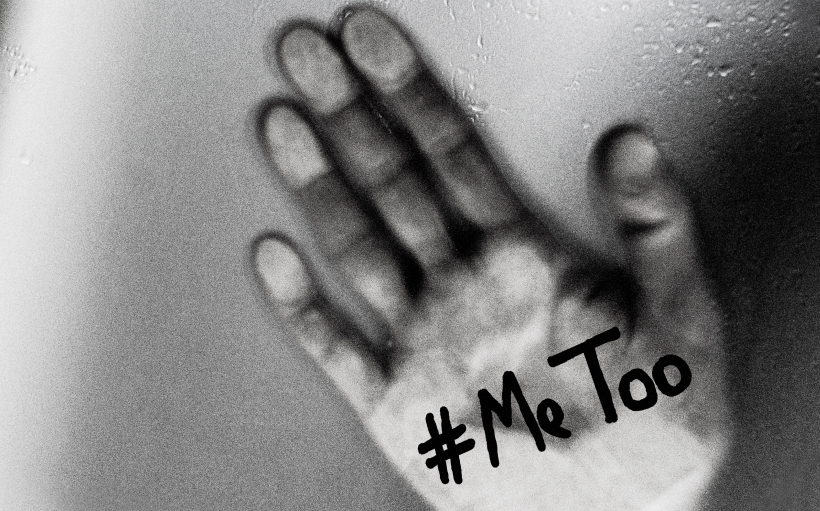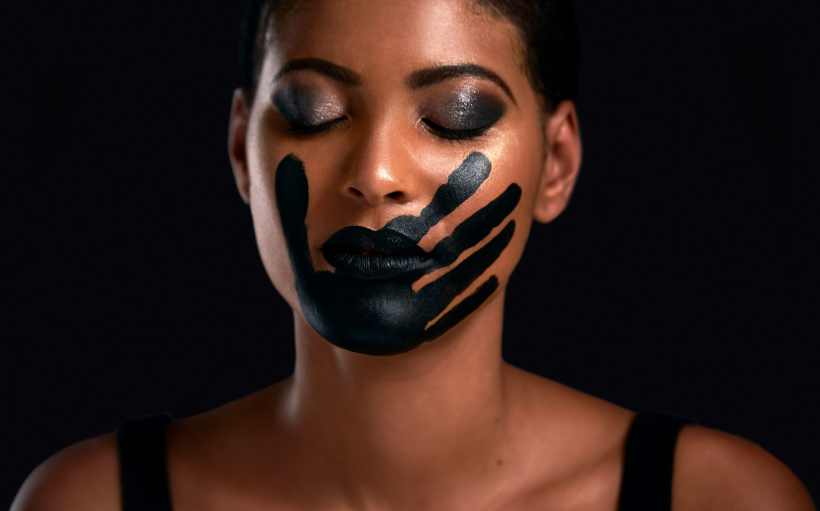After taking a required Intro to Psychology course as an undergrad, I have never looked back. Since my doctoral program, I have specialized in adult relationship therapy. Through my studies and clinicals, I wrote several articles for professional journals and currently in the midst of writing a book.
The #MeToo Movement Today
Social injustices like sexual misconduct and sexual abuse were the catalyst for the #MeToo Movement. That’s a global initiative that is meant to draw attention to this issue and to empower women and men who have been victims.
Let’s take a dive into the #MeToo Movement. In this guide, we’ll review its history, its influence on law and policy, where it stands today, and the implications for the world of dating and relationships.

The History
The phrase “#MeToo Movement” was first used by Tarana Burke in 2006. Her story is fascinating. Born in the Bronx, New York, she became involved in the civil rights movement as a teen. She focused mainly on racial discrimination and housing inequality. She also joined organizations dedicated to black youth development. Eventually, she earned her degree from Alabama State University and moved to Selma.
As Burke continued her work with young blacks, she learned of their personal experiences of sexual assault and abuse. Burke was a survivor of sexual abuse herself, so this was a cause close to home. Burke continues to be a part of a number of organizations. They mostly promoted health, wellness, training, and development for young women of color and sexual assault survivors. Eventually, they could become leaders in their own communities.
2017 witnessed widespread exposure of the whole sexual harassment and sexual assault issue. The catalyst revelation was that film tycoon Harvey Weinstein had been sexually abusing women for years. This ushered in a flood of women—from all walks of life and all over the globe—with their own stories. And the #MeToo Movement took off!
Celebrities were vocal in their shock and rebuke of Weinstein. But actress Alyssa Milano went further and ran with the #MeToo hashtag all over her social media accounts. Her goal was to publicize the issue and to build a community of victims of sexual abuse and harassment. The #MeToo Movement quickly became a global movement. It’s important in those countries where women have had far fewer rights than in the US.
The Stats
In January 2018, the organization Stop Street Harassment commissioned a study on sexual harassment and assault. A total of 2,000 nationally represented people were surveyed in the US, and the final report showed that:
- 81% of females surveyed reported some type of harassment or assault.
- 43% of the males surveyed reported the same.
- Sexual harassment was the most common type reported—77% of women and 34% of men.
- 51% of women and 17% of men stated that they were physically touched or groped in an inappropriate way
- 27% of women and 7% of men reported that they were victims and survivors of a sexual assault
Once Milano posted a tweet on the #MeToo Movement, almost a million users re-posted the hashtag within 2 days. This then hit Facebook with about 4.7 million sharing their posts within 24 hours. Still today, people all over social media are keeping the conversation going.
Clearly, they broke the silence about sexual violence, harassment, assault, and other forms of sexual bullying. And it continues, including the current legal situation that former President Trump finds himself in.
Related reading: 2024 Dating App Trends: Users in Control

Results of the #MeToo Movement on American Society
One of the first things that happened following the widespread attention given to the #MeToo Movement was that lots of very well-known celebrities across many fields became the subjects of accusations with the caveat that they should be held accountable.
But there were important changes brewing, and some were more immediate than others:
- Victims came to realize that they had an entire cadre of people just like them—tens of thousands in fact
- Changed societal understanding of the issues, enhancing sympathy for victims
- Drew attention to laws and policies that should be reviewed and new ones enacted
- Normalized the discussion about the issue, encouraging victims to tell their personal stories
- Increased incidence of reporting abuse
Laws and Policies
Before the #MeToo Movement became widespread, the federal government passed the 1964 Civil Rights Act. Title VII of that act did address sexual harassment a type of sex discrimination. It defined sexual harassment as any “unwelcome sexual advances, requests for sexual favors, and other verbal or physical conduct of a sexual nature.”
Title VII addresses sexual harassment as a form of sex discrimination. Here are the key points:
- This law applies to any organization with 15 or more employees
- Harassment doesn’t have to be sexual in nature and can also include offensive statements about a person’s sex in general
- Targets and harassers can be male or female or even of the same sex
If sexual discrimination and/or harassment is disrupting the work environment and making it hostile, it is against the law. Of course, this has meant that victims feel empowered to speak up—many times they have not felt that comfort for fear of repercussions. It took the #MeToo movement for these victims to finally feel more comfortable in telling their stories. And while women may make up the majority of these victims of powerful men, we cannot forget that male adults have been as well and should be heard.
Local and state laws have also improved regarding sexual assault in the home. Marital rapes are recognized as crimes in many locales, although proof of such behavior still remains a tough row to how.
Companies and Organizations Step Up
The #MeToo movement has pressured organizations to adopt much stricter policies in the workplace. While the issues of harassment and worse may not be categorized as crimes within that workplace, there has been a lot of effort on education and training about what constitutes harassment and what the consequences will be within that workplace for those who violate the policies.
“With the Weinstein story, a dam broke…It’s disheartening to realize just how many women have had their careers and lives affected. But when you think back to Anita Hill over 20 years ago, there’s a difference now in recognizing how widespread this is, and the conversation really has turned to the fact that it’s a systemic problem. That’s something we haven’t seen before now.”
Colleen Ammerman, Director of the Gender Initiative at Harvard Business School.
The article in question has outlined several things that companies must do to solidify their positions on workplace harassment, one of which is to protect the accuser.
Ammerman continues,
“What you don’t do is put the onus on the person who is being victimized…You have to assure people that there won’t be backlash if they come forward and say things happened to them. Their careers won’t be derailed, they won’t be retaliated against or have to navigate hostility, they won’t be the ones reassigned to avoid the person victimizing them, and they won’t be forced to be isolated in their organizations.”
Is there more work to be done here? Of course. But the #MeToo movement and other advocates have been instrumental in keeping the pressure on. One more recent development is the fact that many states have banned non-disclosure agreements—something used to keep victims and survivors quiet about their experiences.

Personal Impact of Sexual Harassment and Abuse
Those who have been sexually harassed, abused, or assaulted do suffer psychological (and even physical) consequences—PTSD and other psychiatric disorders, depression, thoughts of suicide, and other disorders. These can be life-changing. And again, while women are more often the targets and survivors, men experience the same impacts whether in the workplace, other institutions (e.g., school) or in the home.
While victims may seek justice (and even achieve it) the experiences themselves will require emotional support and healing, usually via therapy. This is where advocates can play a vital role, in encouraging survivors to get the professional help they need and to support them in those efforts to get that help. Survivors of sexual violence especially must be encouraged to get that help.
Shame is also a common response of a victim, and this is one of the reasons for the vastly under-reported incidents:
- Targets of any age and in any environment may be frightened and keep their silence.
- They’re embarrassed. They will feel self-conscious and awkward trying to report it to someone with whom they are not close—a company HR Director, for example.
- They are not certain they have actually been sexually harassed because they are not certain of the law or organizational policies.
- They experience sexual harassment or have even been sexually assaulted but believe coming forward is pointless to report because nothing will be done about it, and they will not achieve justice. Fortunately, they can receive support from other survivors via the #MeToo Movement.
Powerful men and women count on their targets to be too ashamed or hesitant to step up and make their voices heard. And the Me-Too Movement fights this with lots of publicity, awareness, and support. It’s an ongoing battle.
Steps Backward
Have there been some steps backward? Yes. Once Roe v. Wade was overturned by the US Supreme Court, many states went on to install very strict abortion bans that have impacted targets of sexual assault and rape.
A child who, at a young age, has been raped must now live with the emotional pain of that rape by being forced to carry a baby, being reminded daily of that assault. And while this is a horrible situation, a woman of any age can face this same “sentence.”
“In a world where women have to fight for control of our bodies but bear the consequences of men’s actions upon them, in a world where sexual violence is not a rare exception but utterly pervasive, we cannot act like stripping women of this right (abortion) will not prove devastating.”
A survivor of sexual abuse and member of the #MeToo Movement
Five Years In
Five years after Alyssa Milano hit social media with the #MeToo hashtag, inviting other women to join, spread the word with the same hashtag, and to tell their stories. The movement exploded, and women (and men) took the challenge. So, on its five-year anniversary, where did the movement stand?
In 2023, Forbes published an article on the movement six years after its inception. It outlined specifically the empowerment of women in the NFL franchise Commanders (formerly Redskins) to fully disclose the culture of harassment within that community—so much so that ultimately the team’s owner was forced to sell. In fact, the account of what went on became the subject of a House of Representatives investigation.
“Of course, we had people that had negative things to say, but the majority of feedback I received from people—whether that’s on social media or just reading stuff on the internet—was very positive. When it came out that Dan Snyder offered us hush money to stop speaking out, for example, it upset the fans more and more. It inspired us to keep going, because we could see the support from people who were able to separate the sport from the fact that we are all humans and deserve to be treated with respect.”
Emily Applegate, the first woman to come forward
Like all movements, says the author of the Forbes article, the #MeToo movement path is not linear, and in this country and at an international level, there have been crooks in the road.

Implications for 21st Century Dating
Unfortunately, both online and offline dating lend themselves to sexual harassment and assault. Girls and women are more often the targets of such actions, but, especially via online dating, guys can be targets too. Both young people and full adults can be the subject of these activities, and much greater awareness is called for in a society that often minimizes online harassment and assault. So, let’s look at both forms of dating and how they fit into the larger #MeToo picture.
Online Dating
With so many options to join online dating apps and so many girls and guys using them to make romantic connections, it stands to reason that there will be disagreements, arguments, and, unfortunately, unwanted overtures made that are sexual in nature. Add to that, the fact that some young people and adults join apps for the sole purpose of sexual harassment, and there can be a lot of inappropriate and just plain bad stuff going on in digital space. Some research reports that sexual harassment on dating apps ranges from 57 to 88% and that a woman and a member of a minority sexual orientation is more likely to become a target.
Harassment can include anything from inappropriate comments to sending suggestive photos without the consent of the receiver. The vast majority of dating apps have a support team, and reporting harassing behavior is critical. And remember, any type of threat is considered assault. While dating apps do what they can to protect their members, more work remains.
Related reading: How to Start Dating & Enjoy It
Offline Dating
Many of the harassing behaviors seen on dating apps and social media platforms also occur with IRL dating. When people date, they call, message, and send photos. Some of these may be unwanted by the receiver and continue even after that receiver asks for them to stop. In such instances, fortunately, they can block the perpetrator, and that becomes a type of support system.
But IRL dating also comes with big risks. And there are real-life bad guys who will take advantage of unsuspecting targets. Binge drinking can put a target off guard and subject them to rape; date rape drugs are readily available and used. While society sees men as the most frequent perpetrators, the flip side can occur too. This is sexual assault and nonconsensual rape to be sure.
When a target realizes the truth, there are always emotions involved. There are feelings of being ashamed; the survivor wonders if they will be believed if they should go to the authorities; many others shut down and retreat into depression or suffer PTSD. And survivors of date rape frequently show up as a part of the Me-Too Movement. They are believed and where they can find support from other survivors. It’s a step toward healing from an assault that could otherwise cause a lifetime of pain and anguish.
#MeToo Is Not Going Away
The beauty of the #MeToo Movement is that it has empowered survivors who have become part of a community that continually increases in its number and thus its strength. Perpetrators beware – they will be coming for you!








